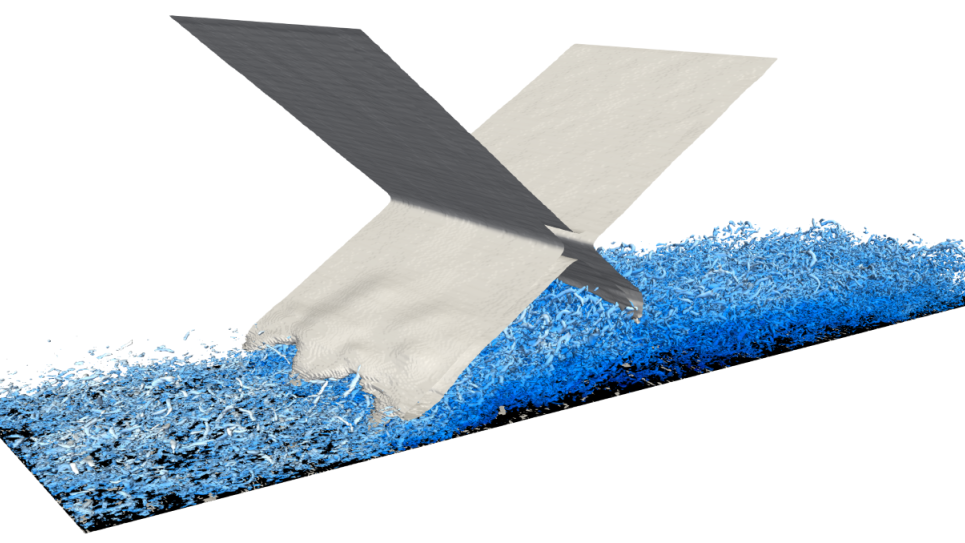
Shock wave (white sheets) impinging upon a turbulent boundary layer, with eddies colored by the streamwise velocity (shades of blue). This project investigates how the shock/boundary-layer interaction is modified when the incoming boundary layer is skewed relative to the shock, which is relevant to realistic 3D geometries like swept wings.
Credit: Johan Larsson, University of Maryland.